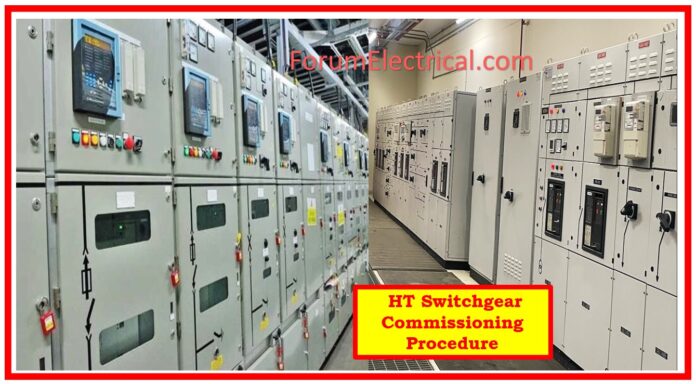Table of Contents
Objective
To assess the charging capacity of the HT switchgear panel under full load conditions.
Proposal
Conduct the following tests in the panel:
- Testing of the transformer oil (BDV, moisture content, and so on).
- Measuring the insulation resistance of bus bars (power, control, and VCB).
- Measuring Busbar and Contact Resistance
- High Voltage (HV) Test
- Primary Injection Test
- Protection, Interlocks, and Metering Circuits.
Equipment Required
- 5000V Insulation Tester,
- 3 Phase 415 AC 50 Hz System,
- DC Control Supply,
- High Potency AC/DC Source,
- Measuring Kit,
- Current Injection Kit,
- Micro OHM Meter
Safety Precautions
Fire extinguisher system ready.
The overload trip lever requires that the 11 KV/3.3 KV AC panel be charged, and the caution board must be in good working order. Additionally, materials need to be kept distant from the switchgear panel area.
Emergency Procedure
- Isolate the transformer and control power supply.
- Issue an emergency trip command.
Commissioning Procedure
- Inspect and repair any physical damage to the busbar, panel doors, insulation, power and sliding contacts, etc.
- Ensure the panel inside is dust-free and free of foreign materials.
- Ensure proper alignment and clearance of bus bars, smooth module racking, proper limit switch contacts (test and service), and tightness of input and output power cables and internal wiring.
- Inspect all relays & remove any shipping blocks to ensure the armature moves freely.
- Verify all doors for proper mounting of the switch handle.
- Check Door Interlock Mechanism.
- Test all PTs, CTs, and relays involved. Maintain the recommended settings for the relays, such as overcurrent, under-voltage, and overload protections, and calibrate the meters.
- Use a 5000 V DC meter to test board insulation and ensure it meets relevant specifications (more than 50 Mega Ohms).
- Check all VCBs in the panel for closing and tripping interlocks, as well as overload relay settings.
- Measure busbar resistance, VCC contact resistance (less than 50 milli ohms), closing and tripping time if test report is not available on-site.
- Check the connection of the protection circuit wirings by injecting the primary current.
- Conduct HIPOT tests for 75% of the voltage specified in the test report for HT buses and 100% for HT incoming power cables to identify leakage currents.
- Check the input power cable terminations from the secondary transformer.
- Before charging the panel, ensure proper phase sequence & circuit closure of CTs.
- The check closing and tripping mechanism works smoothly, both manually and electrically.
- Manage and charge the control and AC auxiliary supply buses.
- Space heaters and thermostats must be in good condition.
Completion
There is the possibility of starting the HT drives and checking the direction in which they rotate. HT drives can be started and the direction of rotation checked.
Attachments
- SLD of the electrical system.
- A schematic diagram of switchgears.
Applicable Standard
IS/IEC 62271-207 (2007): International Standard applies to switchgear assemblies for alternating current of the rated voltages.









